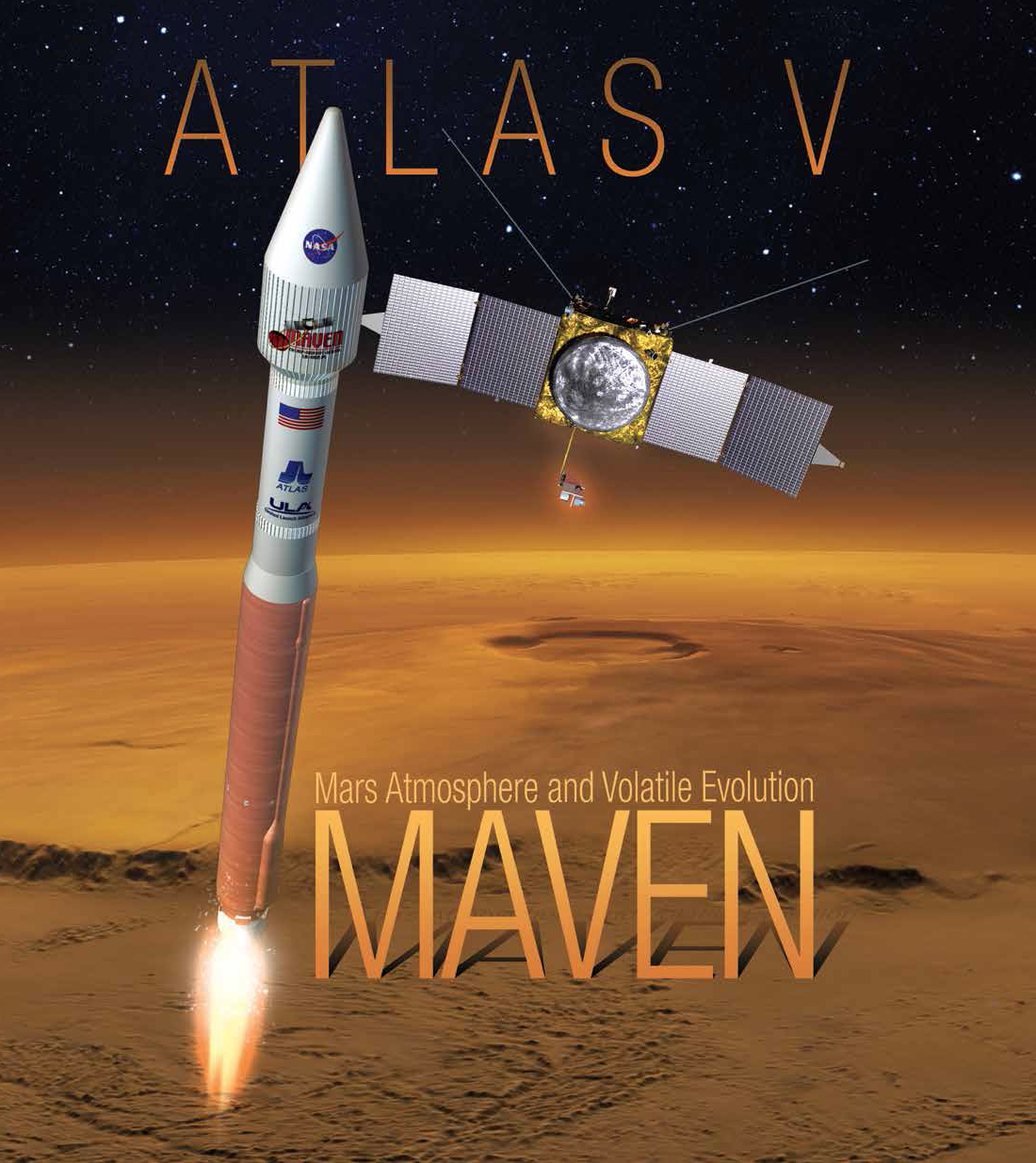This Blog's is here to explore, examine, reexamine, evoke, provoke, stimulate and highlight various subject matter. We are not here to change minds, just to free them. Please remember that the truth does not cease to exist simply because you want to ignore, hide, or forget it! Do feel free to comment.
Friday, September 19, 2014
Jamaican Police seek woman in killing of businessman Kentley Thomas
Cops seek woman in killing of businessman
Christopher Thomas, STAR Writer
WESTERN BUREAU:Up to late last night, police said they were still searching for a woman who is being sought in connection with the killing of a businessman in the wee hours of Saturday morning.
This, following a stabbing incident at a nightclub in Montego Bay, St James.
Dead is 47-year-old businessman Kentley Thomas of an Orchard Gardens address in Hopewell, Hanover.
Reports from the Constabulary Communication Unit (CCU) are that on Saturday, at approximately 5:15 a.m., Thomas was a patron at a nightclub along Gloucester Avenue in Montego Bay.
It is further reported that while at the club, Thomas got into an altercation with a female patron. During the brawl, the female brandished a ratchet knife and stabbed Thomas, before fleeing the scene.
Thomas was subsequently pronounced dead at hospital.
Last night, police said they were following certain leads and are hoping to make a breakthrough with their investigations soon.
The Barnett Street police are investigating.
Thursday, September 18, 2014
Orion Space Craft a step closer to deep space; NASA practices pulling it from sea


Orion Multi-Purpose Crew Vehicle (MPCV) is a planned, beyond-low Earth orbit (LEO) manned spacecraft that is being built by Lockheed Martin for NASA, and Airbus Defence and Space for the European Space Agency for crewed missions to the Moon, asteroids and Mars. It is planned to be launched by the Space Launch System. Each Orion spacecraft is projected to carry a crew of 2–6 astronauts.
The MPCV was announced by NASA on May 24, 2011, aided by designs and tests already completed for a spacecraft of the cancelled Constellation program, development for which began in 2005 as the Crew Exploration Vehicle. It was formerly going to be launched by the tested-but-cancelled Ares I launch vehicle.
The MPCV's debut unmanned multi-hour test flight, known as Exploration Flight Test 1 (EFT-1), is scheduled for a launch aboard a Delta IV Heavy rocket in December 2014. The first crewed mission is expected to take place after 2020. In January 2013, ESA and NASA announced that the Orion Service Module will be built by European space company Airbus Defence and Space for the European Space Agency.
The MPCV was developed for crewed missions to the Moon, to an asteroid, and Mars. It is intended to be launched by the Space Launch System. A modified Advanced Crew Escape Suit is planned to be worn by the crew during the launch and re-entry of the mission.
The spacecraft is named for the Orion constellation.

Orion a step closer to deep space; NASA practices pulling it from sea
You have built a multi-billion-dollar spaceship that will one day take humans to asteroids and Mars. You have big plans to send it up 3,600 miles into orbit, or about 15 times farther than the International Space Station. Now comes the hard part: Recovering this major piece of equipment once it lands.
On Monday, NASA, along with a team from Lockheed Martin and the U.S. Navy, boarded the USS Anchorage at San Diego Naval Base to take a practice run at recovering the Orion – the space agency’s latest achievement in deep-space exploration – from the sea.
The craft, a multipurpose crew vehicle that looks something like a giant triangular robot sent from space, is set to take its first unmanned flight in December. Orion will climb 3,600 miles into orbit, make one trip around the world and fall back to Earth traveling about 20,000 mph. The module’s exterior will reach nearly 4,000 degrees before the craft is slowed down with the help of several parachutes and finally splashes down in Southern California waters.
“I'm not sure Americans particularly grasp the significance of what’s going to happen,” NASA Administrator Charles Bolden told the Los Angeles Times while aboard the Anchorage. “The most powerful nation in the world will be sending a spacecraft intended to carry humans farther than we’ve been in 40 years. We have not designed a spacecraft to do this since the Apollo era. So when we launch in December, it will be something that a whole generation of Americans have not seen.”
The type of effort needed to retrieve the Orion also will be a first for NASA. That is why, when word got out about NASA’s plans to build Orion, the U.S. Navy wanted to be there for its recovery.
“The Navy was there during the Apollo, so when the Orion came up, we raised our hand and said, ‘Listen, we can do this mission,’ ” U.S. Navy Rear Adm. Fernandez Ponds told The Times.
According to Ponds, there is no better ship for the recovery of Orion than the Anchorage, with its radar, flight deck, robust medical facility and all-important well deck, an area of the ship that can take on water to allow boats -- and in this case the Orion -- to dock inside the ship.
On Monday, Michael Bolger, manager of the ground systems development and operations program at the Kennedy Space Center in Florida, laid out how the recovery would work:
When Orion splashes down, the Navy will send out Zodiac ships filled with divers to meet it. The divers will attach a series of straps so that Anchorage can attach a winch line to reel the craft in, “almost like a fishing line.” While the module is being reeled in, smaller vessels will be on each side of it, with crews to tend lines centering the craft.
The well deck will open, filling with about 6 feet of water. Once the module is safely inside, the well will drain out.
At this point, if the Orion were manned, the astronauts would be able to step out.
In several years when the Orion takes its first manned flight, the entire recovery operation will have to take place in less than two hours to ensure the comfort and safety of the astronauts.
NASA and the Navy have tried one other method for recovery, which involved a crane to lift the module out of the water and place it on the ship. A similar method was used to recover the Apollo modules.
Milt Heflin, a retired NASA employee who participated in eight Apollo recoveries, says that although the crane method might be easier, the device would be too heavy for Orion.
“Anything you do like that adds weight to the spacecraft,” said Heflin, who is affectionately referred to as “the sage” as he consults on the Orion recovery efforts. Without the crane and lifting loop, a giant hook built on top of the module, this recovery became “much more difficult than what we were doing.”
Difficult, yes, but Orion has had previous stumbling blocks. At one point, the entire program was scrubbed.
In early 2010, the Obama administration canceled the Constellation program, of which the Orion was a part.
According to the Denver Post, the Obama administration described the Constellation program as being "over budget, behind schedule and lacking in innovation."
But later that year, the president signed the NASA Authorization Act 2010, effectively saving the Orion program but bringing an end to the larger Constellation program.
“Our nation's leaders have come together and endorsed a blueprint for NASA,” Bolden told reporters at the time, “one that requires us to think and act boldly as we move our agency into the future. This legislation supports the president's ambitious plan for NASA to pioneer new frontiers of innovation and discovery."
Heflin said of government support for the program: “You can’t do this in fits and starts. You’ve got to have sustained commitment.”
He said Orion brought more to the American public than the possibility of deep-space travel. “It makes them feel good from time to time. And there is nothing wrong with doing something that the American public can be proud of.”
On Monday’s practice run at recovering Orion, the Anchorage spent several hours traveling out to sea. There, it met up with another vessel, which carried one of four mockups of the spaceship Orion and dropped it into the ocean via a crane.
The recovery soon got underway.
After some mechanical difficulties with one of the Zodiac ships, divers met up with the module. Line tenders in the smaller vessels then positioned the module behind the Anchorage.
Lining up the module to safely reel it in was tedious. At one point, line tenders were seen manually pulling the Orion into place behind the Anchorage.
Slowly but surely, the module made its way into the well deck of the Anchorage. Once the water drained away, there sat the module – a craft that looked far too small to carry six humans into deep space and back.
Those aboard the Anchorage, of course, were confident in Orion’s upcoming unmanned -- and one day manned -- missions.
“Will we get there? I believe we will,” Bolden said. “There are a lot of people who don’t think so, but I happen to believe we will.”
*******************************************************
Thursday, September 4, 2014
BAY PLAZA MALL FINALLY OPENS: The Indoor Mall At Bay Plaza is the largest shopping mall in New York City
Welcome2TheBronx

THE MALL AT BAY PLAZA OPENED TODAY — AND IT’S GORGEOUS; BRONX RESIDENTS NO LONGER HAVE TO GO TO WESTCHESTER OR MANHATTAN
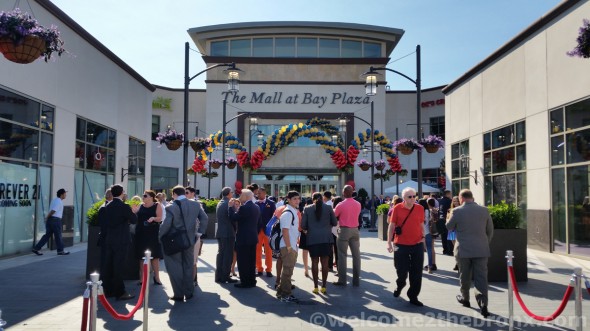
Opening reception for the Mall At Bay Plaza / ©Welcome2TheBronx
The first indoor mall to be constructed in New York City in 40 years has finally opened and The Mall at Bay Plaza in the Baychester/Co-op City neighborhoods of The Bronx does not disappoint.With 780,000 square feet, The Mall at Bay Plaza is the largest shopping mall in New York City bringing with it over 1,700 permanent jobs. With newcomers to The Bronx such as the high-end Michael Kors, a Victoria Secret, and the ever popular H&M, Bronxites will no longer have to trek outside of the borough into Manhattan or Westchester — and in turn will keep their money here.
Another first is a new Macy’s, which is one of the anchor tenants, and is the first brand new Macy’s built from the ground up in over 30 years. (Fun fact: Macy’s currently has 850 stores nationwide and the second store opened outside its original Herald Square 34th Street location was in Parkchester in The Bronx. Also, the founder of Macy’s, Rowland Hussey is buried in Woodlawn Cemetery).
During the opening ceremony, Public Advocate, Letitia James declared, “The people of the Bronx no longer have to go to the border into Westchester to shop, goodbye Westchester!”
New York State Senator Ruth Hassel-Thompson stressed the importance of being able to keep our money within our districts which goes back to what we said earlier. “It gives our young residents an opportunity for employment,” added Hassel-Thompson.
New York State Lieutenant Governor Robert J Duffy stressed the state’s commitment to improve access and egress to the area off the I-95 corridor and commitment of funds to make sure that traffic doesn’t become the nightmare that the community has been fearing.
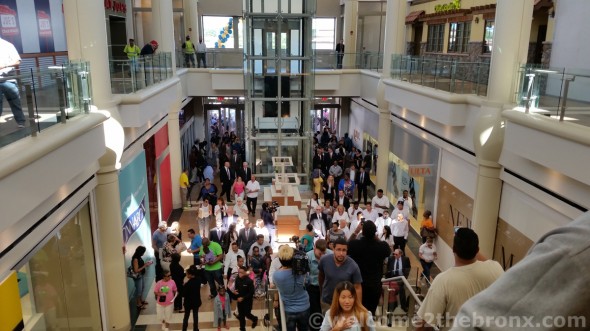
Thousands entered the mall upon its official opening at 10AM / ©Welcome2TheBronx.com
Once the mall opened promptly at 10AM, thousands came through the doors and were in awe. A young shopper was besides herself saying, “This is a really big deal for me and The Bronx, we don’t have to go far for the same stores we shop at in Westchester or Manhattan.”
As I walked around and finally reached H&M, there was a line of hundreds of people waiting to get inside the two-level store but unfortunately had to wait a bit as there was a ribbon cutting for the store’s first Bronx location.
The winners today are the people of The Bronx, both those working and the shoppers. Everyone I spoke to who worked at the mall said they were from The Bronx and according to the developer the number is about 90% of employees are from our borough. Two of these individuals were Danny and Valleirya who both work at Sprint and were excited to be there.
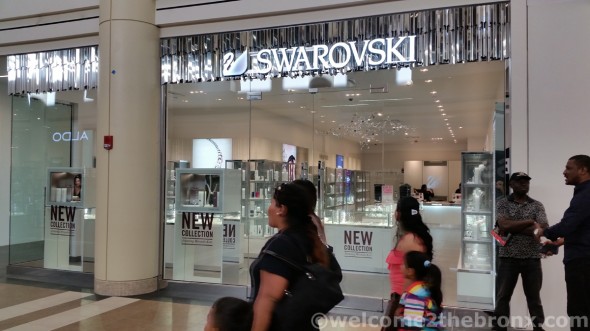
©Welcome2TheBronx.com
The Mall at Bay Plaza offers a wide variety of stores for all Bronxites from the super high end Michael Kors and Swarovski to the casual and affordable GAP and H&M.

First Michael Kors in The Bronx / ©Welcome2TheBronx.com
The economic impact of the mall extends outside its walls. As I exited the mall, I was able to get a taxi by the stand. The driver, Donald Anderson, was excited about the Mall At Bay Plaza. I was his first official fare from the new mall. “I can’t believe how huge it is!” exclaimed Anderson as he drove me to the train station.

Taxicab driver, Donald Anderson was excited about the new mall. / ©Welcome2TheBronx.com
I, along with many Bronxites are excited to keep our money in our beloved Bronx.
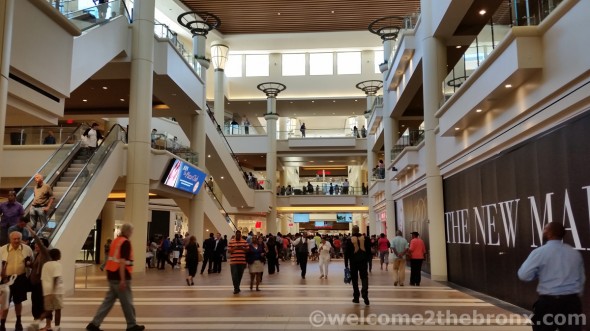
©Welcome2TheBronx.com

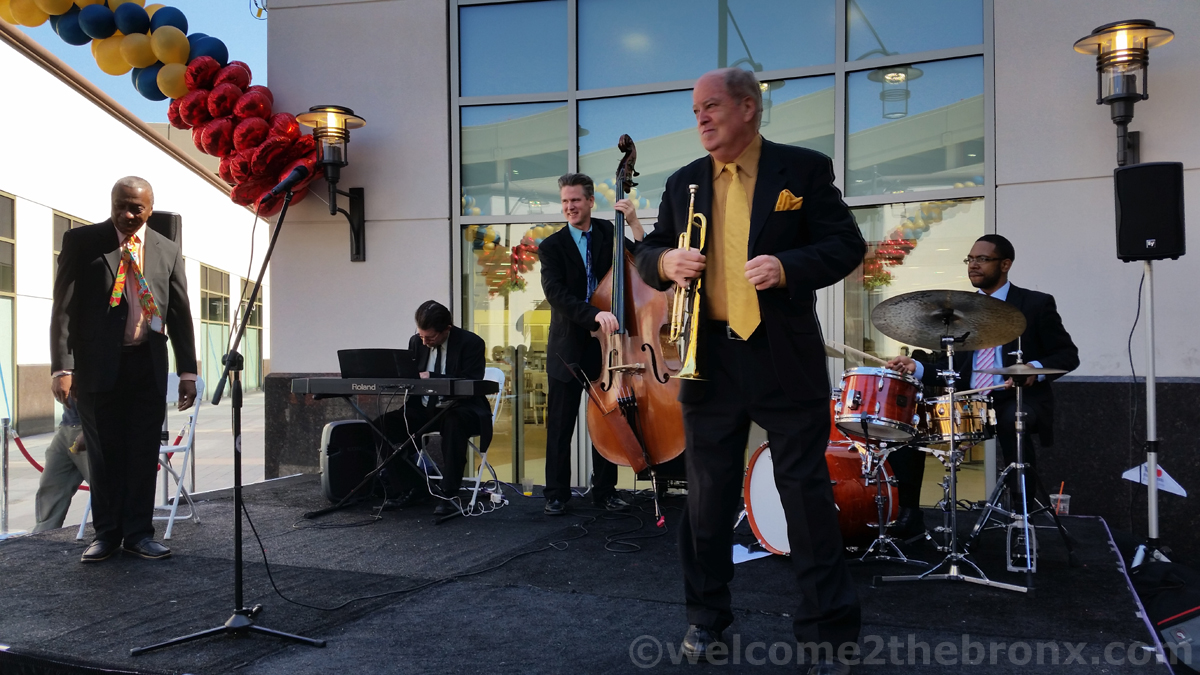
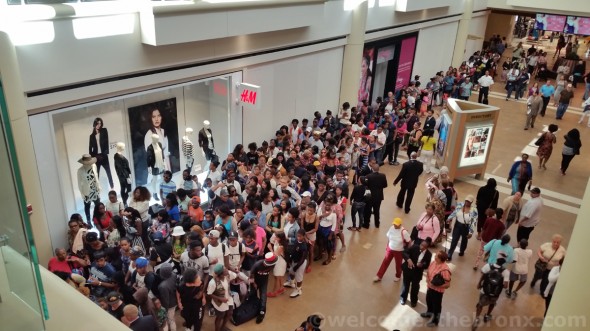
Hundreds line up for H&M

Beautiful Food Plaza
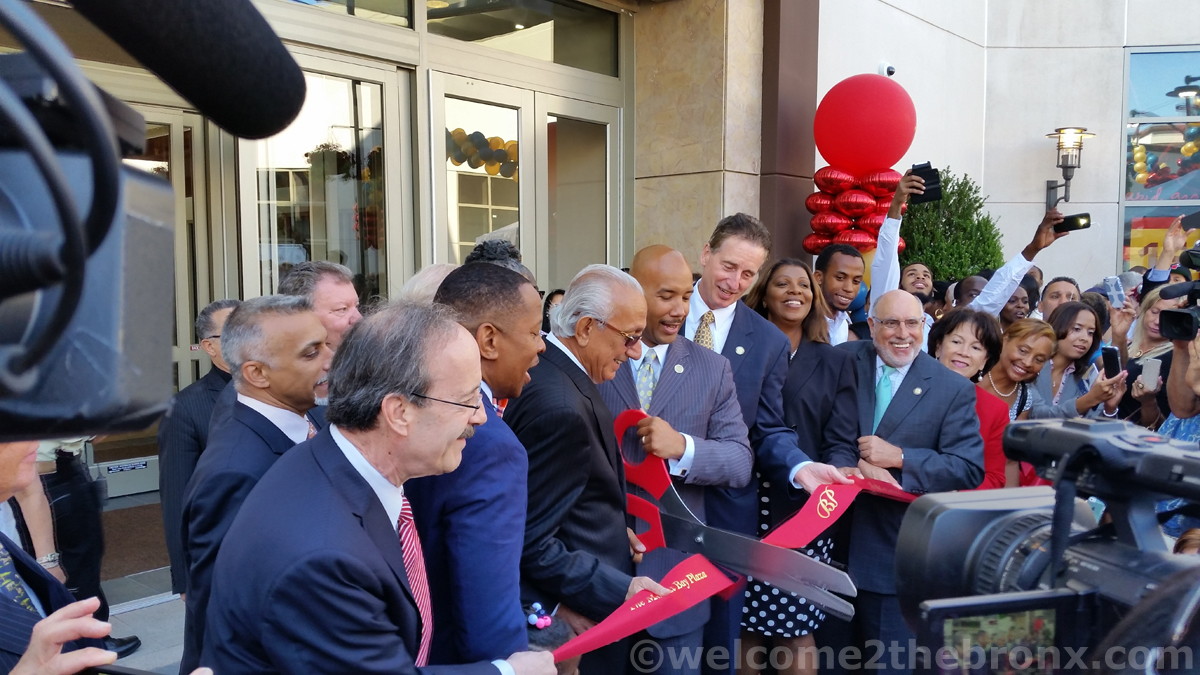
Follow us:
The following photos by Malik Shabazz
Rahiem Shabazz: Exposing the Truth - A call to action’
Rahiem Shabazz: Exposing the Truth to Reclaim Our Young Men
‘Elementary Genocide is more than a documentary, it’s a call to action’
by Cedric 'BIG CED' Thornton Posted: September 4, 2014

 Rahiem Shabazz, award-winning journalist and filmmaker, has a story that needed to be told and with his cunning skills as a journalist and passion for the subject at hand, there was no way he was gonna drop the ball! The critical praise of Elementary Genocide has propelled him further in the game to a point that, although this isn’t his first film, it’s an effective start to many more to come.
Rahiem Shabazz, award-winning journalist and filmmaker, has a story that needed to be told and with his cunning skills as a journalist and passion for the subject at hand, there was no way he was gonna drop the ball! The critical praise of Elementary Genocide has propelled him further in the game to a point that, although this isn’t his first film, it’s an effective start to many more to come.The Atlanta resident spoke to BlackEnterprise.com about why he felt the need to film this subject matter, the marketing details, and what’s next for the camera lens.
BlackEnterprise.com: How did you get your start in the entertainment industry, and what led you to your current role as a filmmaker?
Rahiem Shabazz: I started out as a freelance journalist writing for just about every urban-driven entertainment magazine such as The Source, Vibe, XXL, and a few other notable publications. Not too long after, the Internet became the hot spot for journalists to publish their content. In 2005, with a $6 domain name investment, I started RashaEntertainment.com which averages 2.5 million to 3 million page views a month.
My aspiration for film always existed and became a reality when I found out that anyone with a pro-consumer camera and $500 worth of computer circuitry had the capability to make a movie. I wrote and executive produced a short film called “The Sun Will Rise,” won five awards, and got an apprenticeship with Tyler Perry’s studio. Eventually I was hired as a production assistant and continued to work on four films. It was a great learning experience to be present, witnessing firsthand during a professionally run set.
What drives you to be a part of this industry?
The depth and breadth of our human experience has yet to be fully explained in film. There are so many great and captivating stories to tell when it comes to African Americans, and my inquisitive nature propels me to want to tell it. There’s nothing like selling out a theater and moviegoers come up afterwards to explain how moved they were by your film.
Tell us what ‘Elementary Genocide’ is about and why you felt the need to do the documentary.
I like to tell people, ‘Elementary Genocide is more than a documentary, it’s a call to action.’ However, the documentary exposes the socially engineered mechanism created by our government and utilizing the public school system to label elementary aged African American males as work for hire targets within the U.S. penal system. Many refuse to believe that there is a corporate attack on the minds and productivity of black youth through intercepting their educational, economical, and social development, resulting in statistically funneling them through the revolving doors of the criminal justice system. Elementary Genocide confirms this theory and seeks to educate parents, teachers, and families so that we can reclaim our young men and ensure the future of our community.
I felt that there was a need for a documentary of this magnitude, because the issues were not being properly addressed and those who were attempting to address them did not speak the language of today’s youth. I was able to capture it in a way that resonates with today’s generation.
Outside of exposing some facts, what else are you hoping comes out of doing this film?
I’m hoping the film will be a call to action to get more parents involved in PTA meetings and to seek out other means of education besides the public school system, such as home schooling. We need to elect school board members that are reflective of our community.
If we look at the situation in Ferguson, Missouri, there are only three black police officers out of 53, and there are no black people on the school board. The education system isn’t reflective of our culture as a people and doesn’t teach the greatness of our origin. This is ‘Elementary Genocide’ on so many levels. It starts the first day a child walks in a kindergarten class and the end result is the penitentiary.
What are some of the business aspects you encountered upon completing this film?
The overall process of making any documentary must be learned and developed. I studied the success of other documentarians and, being a gifted writer, made it a natural process. I then began to study the legal aspects to make sure I covered everything from error and omission insurance, written agreements, copyright, etc.
A marketing plan was developed before the documentary was finished. We realized that the momentum must begin with small intimate screenings and panel discussions. We did that in several key markets, while using social media to spread the word. Eventually we moved on to bigger venues and theaters, once there was a demand. Most screenings were sold out and requests were coming in from all across the country. Afterwards, we were able to align ourselves with a distribution company to position us in retails throughout the country.
You stress that black people should own and operate their own businesses. How important is this, and what suggestions would you give those seeking advice about starting their own business?
It’s imperative as a black-owned business to operate in a consistent manner and to be of service to those who look like you. We have the spending power—we just need to spend it more amongst ourselves. There is a saying: “We spend money we don’t have to buy things we don’t need, from people we don’t like, to impress people we don’t know.”
When you have something you’d like to write or document, how do you start the process and make it happen?
The first thing you’ll want to do is research the subject matter as much as you can. Make sure it’s a unique subject that will resonate with viewers. More importantly, you must ask yourself if you’re doing it solely for money or for the underlying social message. If money is your motivation, you’re probably better off making a full-feature film as opposed to a documentary.
What are you currently working on?
I’m working on another documentary titled The Board of Education vs The Board of Incarceration. Sixty minutes was not enough time to fully explore the subject matter, so we are calling this part 2.
How do you manage the creative process as well as the business aspects of your company?
The creative process may start with me, but I have a dedicated team of individuals who I confer with and we sort of bounce ideas around until we all agree. The beauty of it all is I have people around who are a whole lot smarter than I am that will probably not admit it. Overall it’s a team effort at Rasha Entertainment. On the business side of things, the Rasha brand is primarily known for its strong online viewership. We are now able to monetize our content to advertising partners. Our film division experienced a significant amount of success with our Web-series, feature films, and now the documentary. So businesswise, we are in a good place.
What achievement are you most proud of thus far, and what would be the highlight of your career if you could predict any achievement?
My proudest achievement is seeing a determined idea manifested into a finished product. If I could predict an achievement it would be an Emmy or Peabody Award.
For more information on Elementary Genocide go to the website www.ElementaryGenocide.com
Subscribe to:
Posts (Atom)
